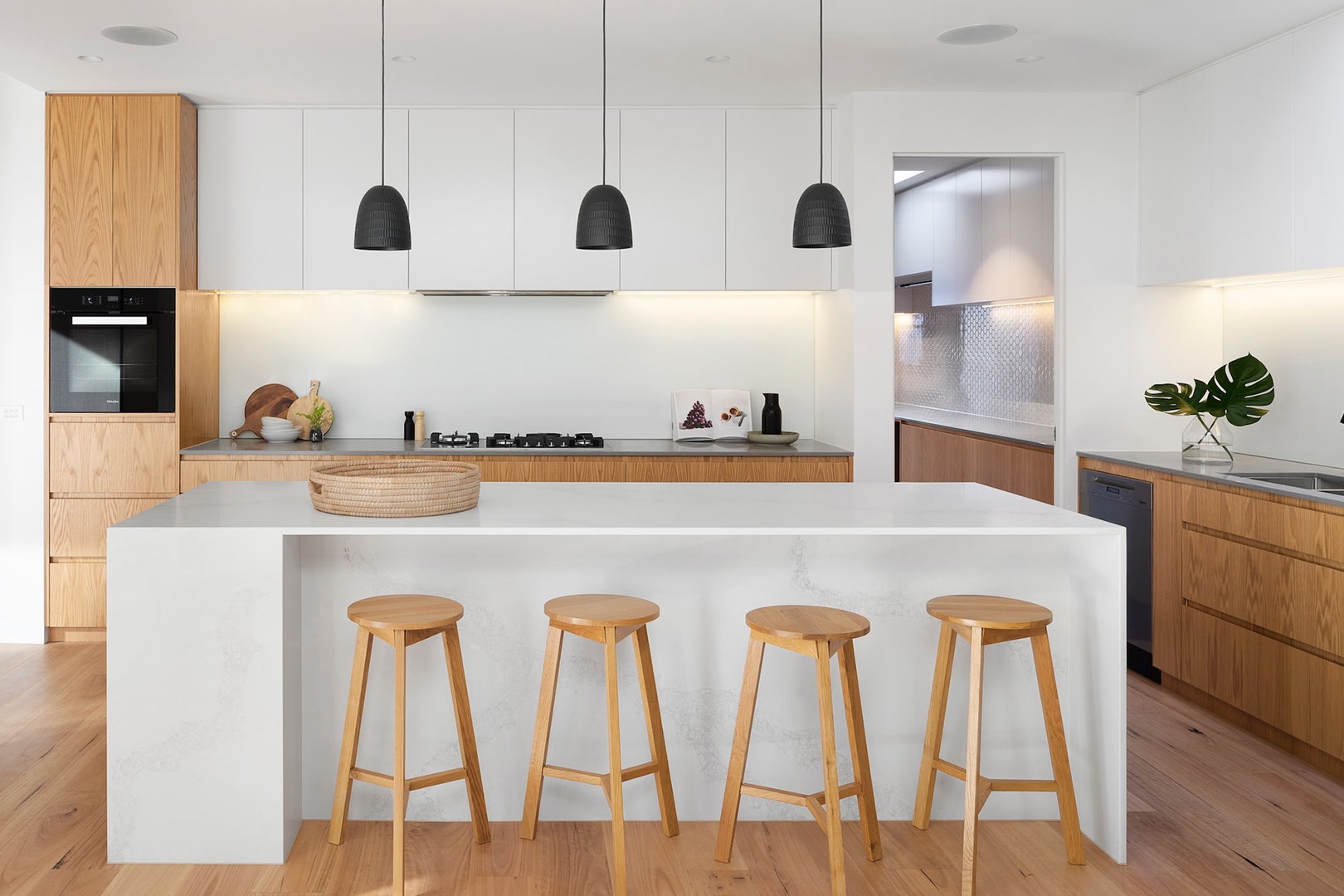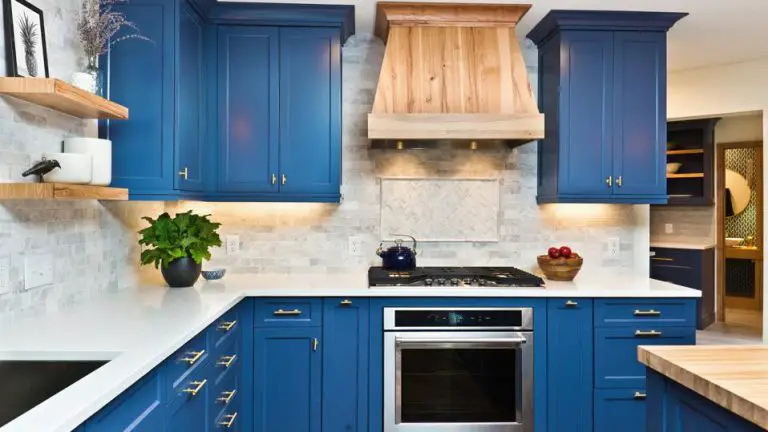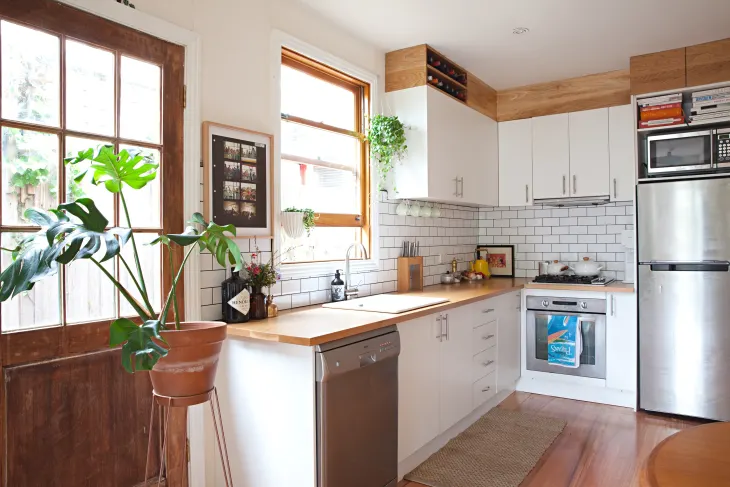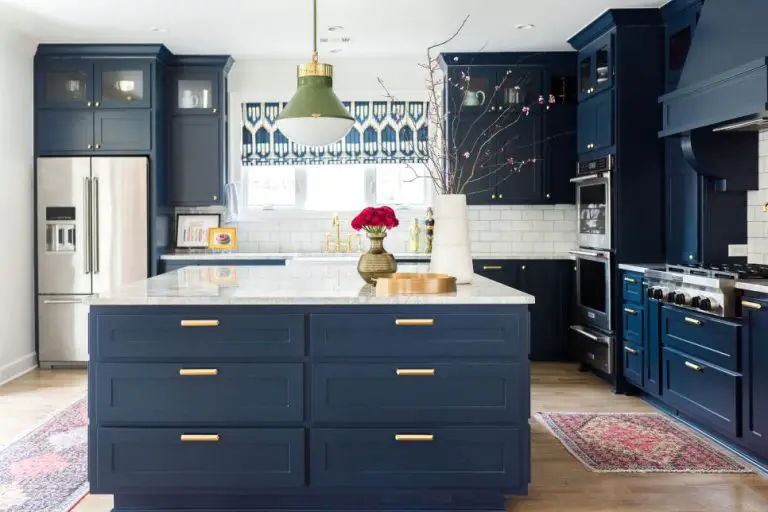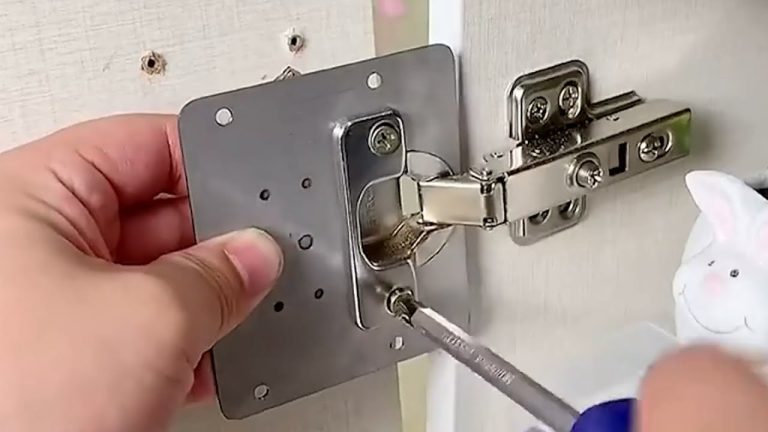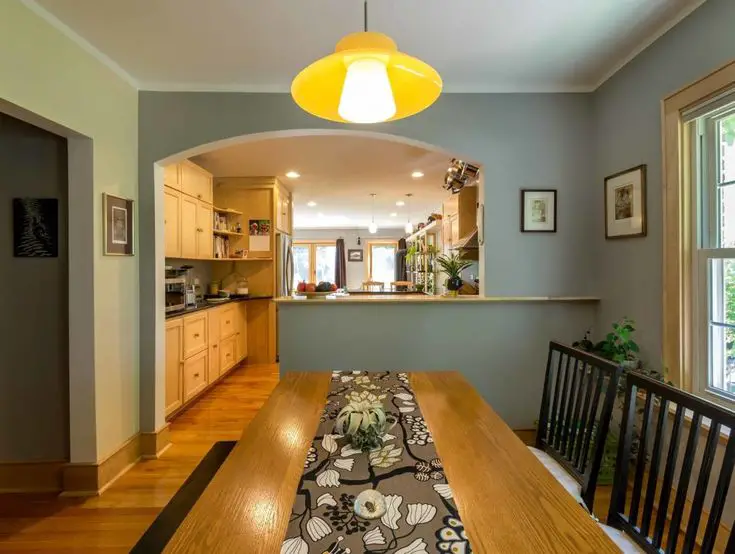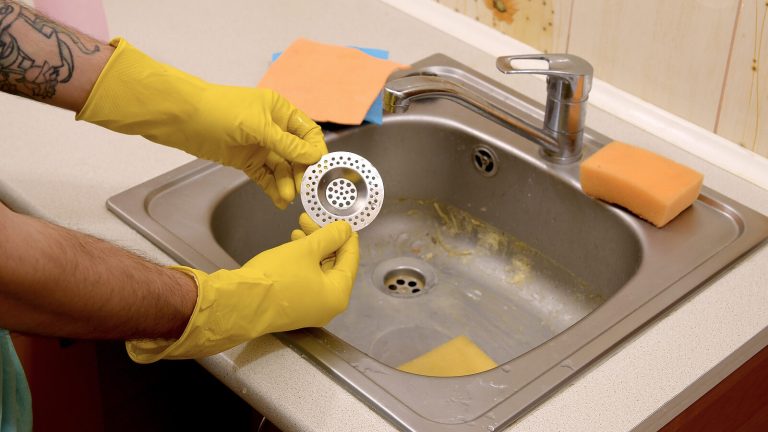Which Colour Is Best For Kitchen According To Feng Shui?
Feng Shui is a Chinese philosophy and practice that helps people to create balance and harmony in their homes and environments. When it comes to the kitchen, the best color to use is one that promotes comfort, warmth, and nourishment. Traditionally, earth tones such as yellow, orange, brown, and even green are ideal for kitchens according to Feng Shui. These colors evoke feelings of balance and stability, which are essential for a successful kitchen. Additionally, these colors can help to create a calming and welcoming atmosphere in the kitchen, making it a great place to cook and enjoy meals.
Understanding the Principles of Feng Shui
Feng Shui is an ancient Chinese practice that helps to bring balance and harmony to a home environment. It is based on the belief that the arrangement of objects and colors in a space can influence and improve the energy flow within the home. When it comes to selecting the best colors for a kitchen, it is important to consider the principles of Feng Shui.
The first principle to understand is that all colors evoke emotions and feelings. Colors can be used to create a certain atmosphere in a room, and this is especially important when designing a kitchen. Colors that are calming and peaceful are ideal for a kitchen since this is a place for preparing food and gathering with family and friends. Warm and inviting tones such as reds, oranges, and yellows can help to create a cozy atmosphere.
The second principle is that colors can be used to create balance and flow in the kitchen. Neutral colors such as whites, beiges, and grays can be used as a base color for the walls to provide a sense of calm and tranquility. Accent colors such as blues or greens can be used to create a feeling of balance and harmony. Additionally, elements such as lighting, plants, and artwork can be used to further enhance the overall design.
The last principle is that the use of correct colors can bring good luck and energy into the home. Colors such as red, yellow, and orange are believed to increase the overall energy in the kitchen. These colors should be used sparingly and strategically to ensure that the kitchen remains balanced and harmonious.
By understanding the principles of Feng Shui and incorporating the correct colors into a kitchen design, it is possible to create a space that is both beautiful and calming. The right colors can help to encourage good energy and bring balance and harmony to the home.
Defining the Role of Color in Feng Shui
Feng shui is an ancient Chinese practice that seeks to balance the flow of qi (energy) in the home. In the practice of feng shui, colors play an important role in creating harmony and balance. When selecting a color for your kitchen, it’s important to consider how that color will affect the flow of qi in the space.
Colors can be divided into two categories: yin and yang. Yin colors are soft and calming, while yang colors are bold and energizing. The right combination of yin and yang colors can bring balance to a space. In feng shui, white, gray, silver, and blue are all considered yin colors, and red, purple, and green are all considered yang colors.
When selecting a color for the kitchen, the best option is to choose a color that is both yin and yang. White is often used in kitchens because it is a yin color that can bring a soft, calming energy to the space. However, colors like red and green can be used to bring a more energizing vibe.
Analyzing the Different Colors for the Kitchen
Feng shui is an ancient Chinese philosophy that uses the placement and orientation of objects to promote balance and positive energy. When it comes to selecting a color for the kitchen, it is believed that certain colors can create a more harmonious atmosphere. To determine which color is best for the kitchen according to feng shui, it is important to understand how different colors affect the energy flow and the overall atmosphere in the room.
The kitchen is the heart of the home, and the right color can promote a sense of comfort and contentment. Red is believed to bring a sense of warmth and energy, while blue and green create a sense of calm and well-being. Black and white are considered neutral colors, but they can be used to create a sense of balance. In addition, yellow and orange are thought to bring a sense of joy and happiness, while purple and brown represent stability and security.
It is also important to consider the overall energy flow in the kitchen. For example, if the kitchen is located in the southwest corner of the home, it is recommended to use the colors associated with the element earth, such as yellow and brown. On the other hand, if the kitchen is located in the east corner, it is suggested to use the colors associated with the element wood, such as green and blue.
Red – The Power Color
When it comes to Feng Shui, there is no single answer as to which color is best for a kitchen. However, red has long been known as a powerful color and is often used for energizing and stimulating a space. Red is associated with love, passion, and courage, and can be used to bring the energy of these emotions into the kitchen. In Feng Shui, red is used to bring a sense of warmth and enthusiasm, while inspiring creativity and strength. The color also adds a touch of boldness and strength to the space, making it an ideal choice for a kitchen.
When it comes to decorating with red, one should be mindful of the intensity of the color. A bright, vibrant red can be too overwhelming, so it’s important to choose a shade that is muted and balanced. Deep crimson, brick red, and burgundy are all good options. It’s also important to consider the other colors in the space and how they will work with the red. A kitchen should be a balanced and harmonious space, so it’s important to use colors that will work together in harmony.
When it comes to Feng Shui, the kitchen is seen as the heart of the home. Red can bring energy and life to this special space, while also inspiring creativity and strength. While it is important to be mindful of the intensity of the color, a well-balanced red kitchen can be a beautiful and energizing space.
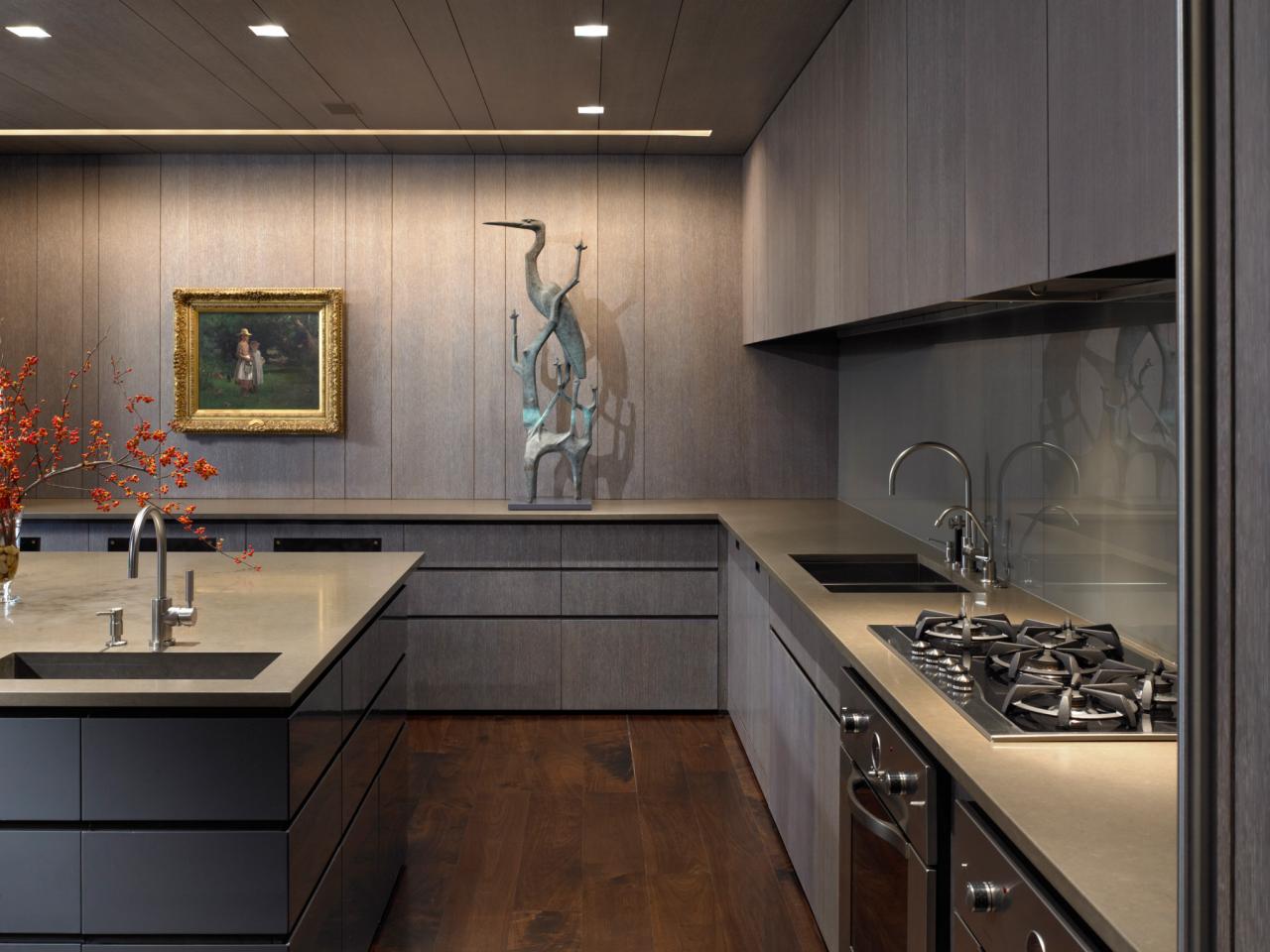
Blue – The Calming Color
When it comes to Feng Shui, the color blue is seen as a calming influence. Blue is associated with water and brings a calming, serene feeling to a kitchen. Blue can also create a sense of spaciousness and can make the kitchen look bigger or brighter. It’s an ideal color for a kitchen as it’s believed to encourage harmony and peace. Feng Shui practitioners often suggest a light blue to open space and create a sense of airiness. Darker shades of blue can be used in small kitchens to add depth and a feeling of protection and security. Blue is an excellent choice for kitchen walls, cabinets, and countertops as it is believed to bring balance and help with communication between family members. Additionally, it is a great choice for those looking to create a tranquil atmosphere.
Green – The Balance Color
When it comes to choosing the right color for a kitchen according to Feng Shui, green is often the top choice. Green is the color of balance and harmony and can be used to create a calming atmosphere in the kitchen. Green is believed to be the most powerful color in Feng Shui, bringing both healing and positive energy into the space. It can be used to create a nourishing and nurturing atmosphere for cooking and entertaining.
Green can be used in various ways in kitchen design, such as on walls, cabinets, countertops, and even appliances. It is a versatile color that can be used to create a modern feel or a more traditional style. Whether used as an accent color or as a primary color, green can help to create a welcoming atmosphere for family and friends.
In addition to promoting balance and harmony, green is believed to have the power to increase communication and creativity in the kitchen. It can be used to create a sense of abundance and prosperity. Green also has the power to reduce stress levels and make cooking and entertaining more enjoyable.
Yellow – The Motivational Color
When it comes to picking the right color for your kitchen according to the principles of Feng Shui, yellow is a popular choice. The color yellow is said to be a positive, motivational color that can bring a sense of calm and serenity to the kitchen. It can also be used to create an energetic and vibrant atmosphere. Feng Shui suggests using yellow to add a feeling of warmth and positivity in the kitchen. This color is also said to bring good luck and success.
In addition to its positive energy, yellow is a great choice for kitchen walls because it’s light and bright. This helps to create an inviting and cheerful atmosphere, as well as making the kitchen look larger. It’s also a great color for cabinets and countertops, as it’s easy to clean and maintain.
When using yellow in your kitchen, it’s important to remember that too much of it could be overwhelming, so it’s best to pair it with other colors such as white, grey, or beige. This will help to create a balanced look that is both calming and uplifting. You can also add other shades of yellow, such as golden or mustard yellow, for a more interesting look.
In conclusion, yellow is a great choice for your kitchen if you’re looking to create an uplifting and motivating atmosphere. It’s light and bright, making it easy to clean and maintain. However, it’s important to remember to pair it with other colors to create a balanced look.
Choosing the Right Color for Your Kitchen
When it comes to picking a color for your kitchen, Feng Shui can be a great guide. While there are no hard and fast rules for choosing a color for your kitchen, there are some tried and true Feng Shui principles that can help you make the best decision for your space. In Feng Shui, the colors you choose for your kitchen are thought to bring in positive energy that will help you create a peaceful and productive space.
Choosing the right color for your kitchen depends on a few factors. First, consider the purpose of the kitchen. Is it a space for cooking, entertaining, or both? Different colors can evoke different feelings and energies, so it’s important to think about what you want your kitchen to accomplish. For example, you may want to choose a color that is calming if you plan to entertain in your kitchen.
Second, consider the Feng Shui elements associated with each color. Each color is associated with one of the five elements: earth, water, wood, fire, and metal. Each element has its own characteristics and associations that can be beneficial for the kitchen. For example, a kitchen decorated with shades of green and blue will be associated with the water element, which can bring in peaceful and calming energy.
FAQs About Which Colour Is Best For Kitchen According To Feng Shui?
1. How is the color of my kitchen related to Feng Shui?
According to Feng Shui, the colors of your kitchen should be chosen carefully to promote positive energy and bring balance to the space. It is believed that certain colors can have a calming effect and others can be energizing.
2. What colors should I use in my kitchen according to Feng Shui?
In Feng Shui, the best colors to use in your kitchen are earthy tones such as brown, red, and yellow. In addition, you can also use shades of blue and green for a calming atmosphere.
3. Does the color of my kitchen need to be changed every year according to Feng Shui?
No, the color of your kitchen does not need to be changed each year. The colors you choose should reflect your personal preferences and be in line with the principles of Feng Shui.
Conclusion
Based on the principles of Feng Shui, the best colors for your kitchen are hues of green, blue, pink, and red. These colors are believed to create positive energy and promote balance and harmony in the kitchen, helping to create a more inviting and calming atmosphere. While any color can be used in the kitchen, these colors are recommended to promote a healthy and harmonious kitchen environment.

